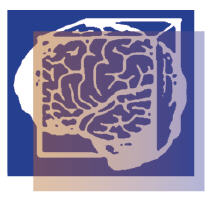By Marco C. Janssen, UTInnovation, the Netherlands

Keeping the lights on using the latest technologies can be challenging but it can be done by getting the right people to analyze and select the right solution to implement the use case at hand.
I just realized that I have been working for over 31 years now and during these years I have seen many things change and evolve. When I started my career at the protection department of one of the major utilities in The Netherlands, the first digital relays started to arrive on the market, and I remember how the protection experts were trying to get their heads around the digital technology and how the correct functioning of the protection could be guaranteed using software-based systems.
It went as far as one of the lead engineers stating that only over his dead body would protection systems ever rely on communication channels. This in response to me proposing a digital differential protection scheme using a bi-directional communication channel to protect a 150 kV T-feeder which, because of the circuit configuration, was difficult to protect selectively using distance relays. Nowadays using such a solution is a common practice, yet in retrospect I do understand why the lead engineer responded to me the way he did. He simply did not have a full understanding of the consequences of introducing a new technology on the security of supply of the power system and wanted to ensure that the lights stayed on.
With the evolution of digital capabilities and the increased bandwidth and reliability of telecommunication systems, standards like IEC 61850 emerged allowing us to use digital technologies reliably. For example, for tripping over digital communication, create reliable and fast wide area protection and control schemes and share fault data almost instantaneously.
So, what is next? In less than 35 years we went from electromechanical to electronic to numerical to digital to cloud based digital to artificial intelligence based digital. I think that soon we will witness protection and control solutions that are smarter than the engineers that define and specify them. This puts us in a similar situation as the lead-engineer in my example as we may not fully understand the implications of using the latest technology. This could lead to rejecting a solution due to lack of understanding. However, at the same time this creates a challenge regarding how to specify, select and validate new solutions for the protection and control of our power systems. Not only are the capabilities of the protection and control systems evolving, but also our power systems are changing behavior due to the introduction of renewable resources, electric vehicles, new market models, etc.
This is an interesting dynamic as we do have to guarantee the security of supply and keep the lights on. In my mind, the best way to tackle this challenge is to, in addition to the power system engineers, incorporate people into the design and decision-making processes that are experts in these new technologies, for example artificial intelligence. The joint team can then drive the discussions based on the actual use cases without dismissing any option beforehand and create a proper business case, the business architecture, the technical architecture, the design specification, the request for proposal and all other required documentation to select the right solution.
In other words, we do what we have always done… We get the right people in the room and after proper analysis select the right solution to implement the use case at hand.
Biography:

Marco C. Janssen is the CEO of UTInnovation LLC and the former Director of the Smart Grid PMO at the Dubai Electricity and Water Authority. He received his BSc degree in Electrical Engineering from the Polytechnic in Arnhem, Netherlands and has worked for over 27 years in the field of Smart Grid, Protection, Control, Monitoring, Advanced Metering Infrastructures, Distribution and Substation Automation. He was a member of IEC TC57 WG 10, 17, 18, 19, the IEEE PES PSRC and CIGRE B5 and D2 WGs. He was the convenor of D2.35 and editor of the Quality Assurance Program for the Testing Subcommittee of the UCA International Users Group. He holds one patent, has authored more than 58 papers, is co-author of four Cigre Technical Brochures and two books on Smart Grids and Electrical Power Substations Engineering and is the author of the “I Think” column in the PAC World magazine.








